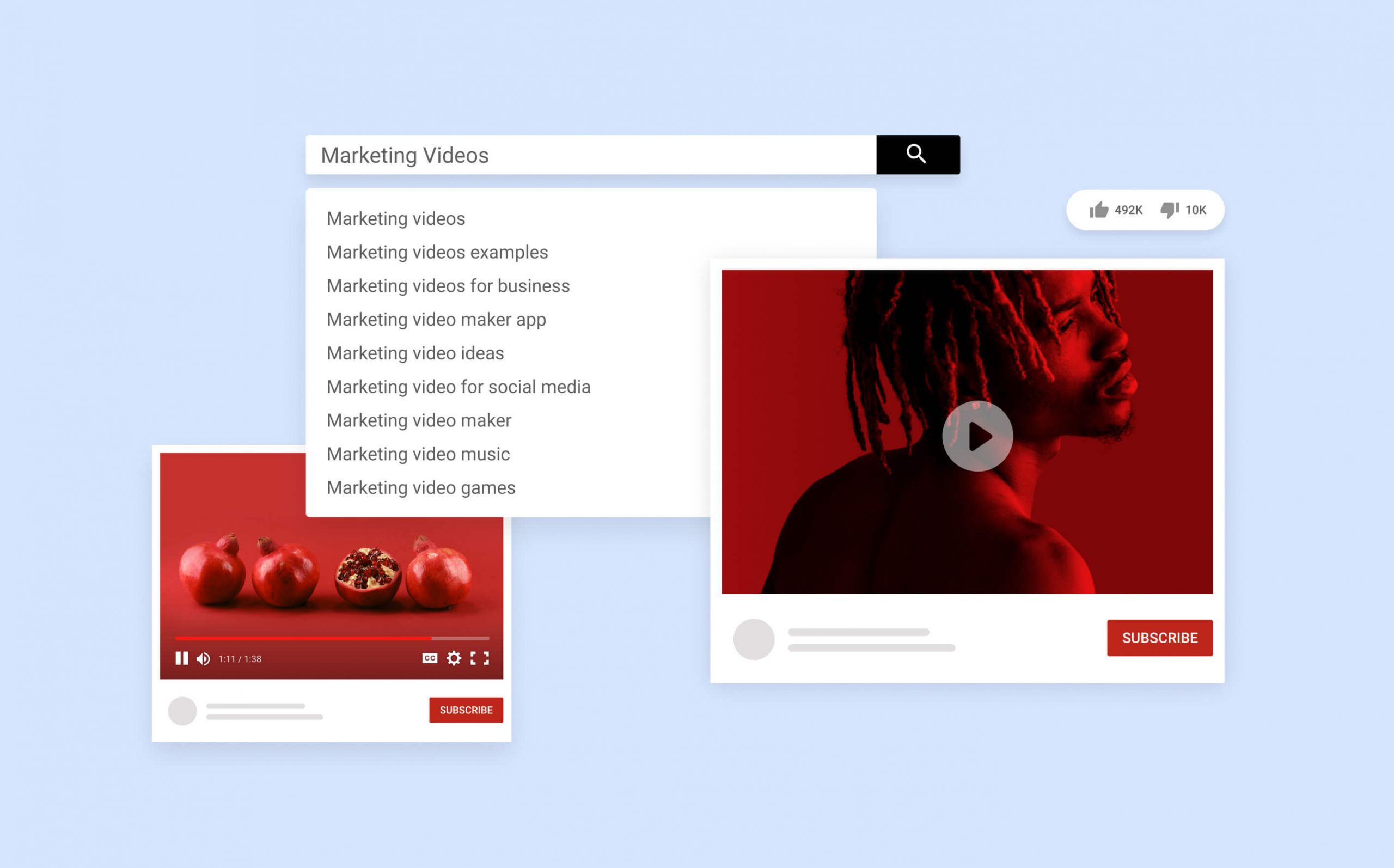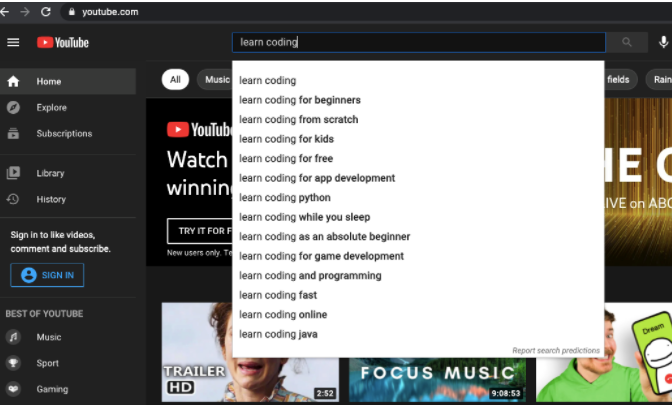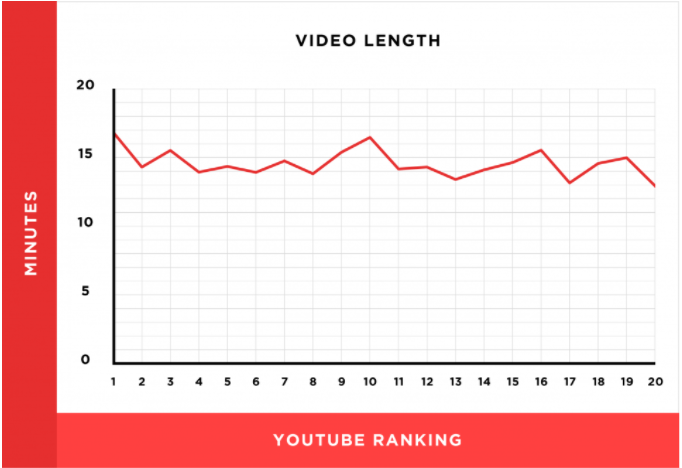
YouTube SEO: 5 Essential Tips to Rank Your Videos on YouTube
Similar to Google’s search engine, ranking your videos on YouTube and YouTube video optimization as a whole are not easy nuts to crack. YouTube search engine is the second-largest search engine after Google has its own algorithms that decide the ranking of each video. Driven by the goal of delivering the most relevant results to the user’s intent based on the keyword used, YouTube SEO is determined by how well the query matches with your title, description, and your content.
YouTube Ranking factors include among others the category of your video as well as the channel. YouTube also uses indirect signals based on audiences through various engagements such as like, dislike, comment, share, subscribe, and watch time.
Keeping all these factors in mind, if YouTubers want to dominate the search results, they need to optimize their videos in accordance with the best YouTube SEO practices and set the ground for promoting their YouTube channel. Here’s your guide to getting started.
1. Keyword Research
Keyword research is the first and foremost important step of improving your YouTube SEO. Because, in order to rank on popular keywords in your niche, you first need to identify those keywords. Now, how do you do that?
YouTube Search Suggestions
One way to begin your keyword research is to pay attention to YouTube’s search suggestions. All you have to do is just type your core keyword and you’ll get all the suggestions.

Keyword Tool
Another great way to begin your keyword research is by using Ahrefs’ free YouTube keyword tool. This will give you the exact search volume of each keyword. If you found some interesting results in the YouTube search suggestions, we also recommend checking them using this source as well.
Keyword Difficulty
While determining which keywords from the list you should choose, there is one major factor you need to consider – Keyword Difficulty. The simple way to find out the difficulty of any keyword on YouTube is by using Google Search Operators. Here is how you can apply it – site:youtube.com your keyword
This will give you the exact number of videos (in “about results” right below the search engine) that are created on this particular keyword.

The lesser number means low-keyword difficulty. To narrow down your search, you can use – site:youtube.com intitle:your keyword. This will give you the exact number of videos containing that particular keyword in TITLE.

Competitor Analysis
Now this is key if you want to outrank YouTube channels that make content similar to yours. Researching competitor keywords will give you a better idea about what they are targeting and what their YouTube ranking is. To see who you should target, type your focus keyword in the YouTube search bar and check the top-ranking videos. You’ll be able to get plenty of channels that way.
Closely classify the keywords they have used in the Title, Description and Tags section. This will surely help you to form a better keyword strategy.
Optimize Video Keywords for Google Search
Remember, YouTube is the second most popular search engine, Google is still number one. And interestingly, there are some keywords on Google that show video results before textual ones.
Thus, all you need to do is find these types of keywords in your domain and optimize the video around it. Also if you have a website for your business, your YouTube video content can boost your SEO.
2. Optimize Title, Description and YouTube Tags
You have jotted down the list of keywords you want to target and now the next step is to sprinkle them across your title, description and YouTube tags. Do not over-optimize or do keyword stuffing. All keywords must be in a ‘natural flow’.
Optimizing Your Title
The title of your video should not be too long because more than 70% of people use YouTube from mobile devices. So, the whole title might not be visible. Keeping it around 60 characters will work well. Always include your main keyword (exact same phrase) in the title.
Another important tip – Enter your main keyword at the beginning of the title (ideally it should appear within first 5 words)
Besides following best YouTube SEO practices in writing a title, it should evoke curiosity and interest among users because a title plays a vital role in CTR (Click Through Rate), which is a powerful YouTube ranking factor.
So, write your title in such a way that it catches the attention of users in search results and convinces them to click.
Bonus tip – Upload a fascinating YouTube thumbnail. YouTube thumbnails also have a substantial impact on CTR. We’ve mentioned it as a bonus tip because this is where you can be unique. The title does play a key role but you cannot just make it unique because most of the competitors may have used the same keywords as yours. Just make sure when making your own custom thumbnail, that the YouTube thumbnail size is optimized as well.
But in the case of thumbnails, there are not any limits and you can customize them the way you want. And so, this is where you can make the difference in boosting your CTR.
Pay Attention to Your Description
Most of the users do not pay much attention to the video description, but it is super important for YouTube to understand the context of your video. The more YouTube understands your video, the more it will reward you with ranking on relevant keywords. This is also an opportunity for you to pay attention to your YouTube banner and YouTube banner size and invite your audience to engage with your channel.
So, how will you write a stunning description that helps you with your YouTube rankings? Are there any specific rules? Well, here is a checklist:
- Include your focus keyword in first-line or sentence
- The description must contain at least 250 words. You can write longer if needed.
- Sprinkle in your target keywords and related keywords across the whole description naturally.
- Repeat your focus keyword at least 2-4 times (depending upon the length of description)
- Do not do keyword stuffing. Insert the keywords naturally.
Optimize Tags
Tags also help YouTube understand your video and its context. But tags on any video are not publicly available on YouTube. So, how will you get to know about your competitor’s tags?
Here is a website named TagsYouTube where you just have to enter the video URL, and you will get the list of all the tags that are used in that YouTube video. You can select the ones which you wish to use and copy-paste them to your video’s tags section.
Using tags of popular videos in your niche might give you a spot in the “suggested videos” section on that popular video. If that happens, you’ll generate a massive amount of views.
Do not bombard your videos with tags by inserting each and every keyword in your niche and make sure to not have your tags too long. The recommended number is around 8-10. However, YouTube allows a total of 500 characters in the tags section.
Create Top-Notch Content
“Content is the king”. This is probably the nth time you’re reading this quote, but creating top-notch content is the bedrock if you want to rank your videos and excel in YouTube SEO.
In a nutshell, videos that keep people on YouTube will be ranked higher. Therefore, your focus should be on increasing audience retention and watch time as it is one of the most important YouTube ranking factors.
Since different industries follow different practices to measure the quality of content, we cannot make a blanket statement on the quality standards of each industry.
But, here are few evergreen tips that would help you to create high-retention videos:
- Create a YouTube intro for all your video channels
- Focus on delivering value first rather than excessively marketing your product or service
- Create high-resolution videos with crystal clear high-quality audio.
- Keep the audience hooked throughout the video
- Give the early seconds of your video some extra love
- Include subtitles (text transcript or timed subtitles and find the best font for subtitles)
- Add ‘i’ buttons (info cards) to your other videos whenever it makes sense.
- Don’t blatantly copy your competitors – be unique
- Use fascinating infographics within videos to help them understand with ease.
Bonus tip: If your brand is selling a product or service, study the behavior of the buyer and their persona. Define a step-by-step sales process in accordance with the journey of the buyer in choosing your product or service. Once you have a firm grip on all these, use storytelling methods to drive the engagement and make your brand stand out in the crowd.
Adjust Video Length
For this metric, YouTube SEO works similarly to Google’s SEO. Just like long-form articles perform better on Google, longer videos tend to rank higher on YouTube compared to shorter ones. That is, unless you are creating a YouTube Shorts.
Here is an interesting graph posted by backlinko that backs up this point.

But, it doesn’t mean you should unnecessarily stretch your video by adding irrelevant things. It might frustrate users and It’s really important for you to hook the audience throughout the video. A longer video should indicate that it is a more detailed one and not stacked up with irrelevancy.
So, create long videos with the aim of adding some extra value, not only to hit the milestone of SEO matrices.
3. Drive Engagement
Like Mari Smith said – “Content is king but engagement is Queen and lady rules the house”.
If you are not able to make people talk about your videos, you won’t achieve greater heights and your competitors might leave you behind. In fact, all the engagements such as like, comment, share, subscribe are included in YouTube ranking factors.
With that said, you have to encourage the audience to engage with your video. And here are some actionable tips to do this:
- Give proper and clear call to actions at the end of the video
- Use an elite Youtube Video making tool to deliver a better experience.
- Encourage the audience to like and share the video, and also subscribe to your channel if they haven’t.
- Turning your bell icon ‘ON’ will notify them whenever you publish new videos.
- Invite them in the comment section to share their views
- Respond to all queries, suggestions and appreciations wherever possible in the comment section.
4. Optimize your YouTube Channel
This is also an important part of YouTube SEO. Whenever users visit your channel, they should be able to get all the necessary information about you or your brand.
Write an Informative Channel Description
A well-written description helps users as well as YouTube to understand the type of content you post. Don’t forget to insert your focus keywords into the channel description.
There isn’t any ideal length for this but avoid writing too long and lengthy descriptions and try summing up the things in short sentences or bullet points. People are likely to skip long paragraphs.
There is also a section of “links” at the bottom where you can add links to your website and social media platforms.
Utilize Playlists
Playlists can give you an incredible amount of views as succeeding videos start playing one after another automatically. This keeps users on your channel.
Apart from this, curating the playlists will help users navigate to videos easily whenever they visit your channel. It’s similar to organizing the videos by splitting them into different categories.
5. Promotion – The off-page YouTube SEO
We’ve done everything we can to optimize the video and get higher YouTube rankings. But the YouTube SEO process doesn’t end here, especially when you’re dealing with high difficulty keywords. In comes your YouTube marketing strategy.
You need to spread the word on social media platforms, websites, and every other platform where it is possible for you to promote the video.
Here is how you can effectively redirect users to your video:
- Create a short version of your video and post it as a teaser to social media platforms. You can easily do this using and online video cutter. Don’t forget to add the link to the full YouTube video.
- Embed your videos inside your website’s blog posts.
- You can promote your videos via relevant discussions on popular forums like Reddit or Quora.
- Insert link to your video while guest posting on a high authority site. This will give much larger exposure depending upon the reach of the website you’re posting.
- Include links to your videos in email marketing campaigns.
Note: YouTube doesn’t use backlinks to measure the quality of content, unlike Google. YouTube mostly relies on audience retention, watch time and engagement signals to analyze your content.
Final Words
Even after knowing and implementing all these vital YouTube SEO strategies, don’t ever divert your attention from creating great content. Videos with poor content are going to sink in the long run because there won’t be significant audience retention and watch time.
Hence, your competitors will beat you for top spots. So, lace up your top-notch content with these SEO implementations and dominate the YouTube search results.
If you loved this article, be sure to check out:



